Natural Destinations and Attractions in Ethiopia
Awash Park
 Awash national Park is located 215km East of Addis Ababa and covers 756 sq km. Its altitude ranges between 750-2007 meters above sea level. The park is known for the interesting range of volcanic landscapes which are geologically active regions; this is marked by Fantalle Crater, Filhowa / hot springs and Lake Basaka nearby. Awash River with its waterfall and gorges is scenic feature of the park. A range of larger wildlife species particularly a fascinating number of Beisa Oryx and the natural beauty of the area is a major tourist attraction. The wildlife consists mainly of East African plains animals such as Oryx, bat-eared fox, caracal, salt dik-dik, colobus monkeys, Anubis and Hamadryads’ baboons, klipspringer, leopard, bushbuck, hippopotamus, Soemmering’s gazelle, cheetah, lion, kudu and others. About 462 bird species have been recorded recently. Bird species include banded barbet, golden-backed wood pecker, white-winged cliff-chat, thick –billed raven, white –billed starling, secretary bird, bustards and storks.
Awash national Park is located 215km East of Addis Ababa and covers 756 sq km. Its altitude ranges between 750-2007 meters above sea level. The park is known for the interesting range of volcanic landscapes which are geologically active regions; this is marked by Fantalle Crater, Filhowa / hot springs and Lake Basaka nearby. Awash River with its waterfall and gorges is scenic feature of the park. A range of larger wildlife species particularly a fascinating number of Beisa Oryx and the natural beauty of the area is a major tourist attraction. The wildlife consists mainly of East African plains animals such as Oryx, bat-eared fox, caracal, salt dik-dik, colobus monkeys, Anubis and Hamadryads’ baboons, klipspringer, leopard, bushbuck, hippopotamus, Soemmering’s gazelle, cheetah, lion, kudu and others. About 462 bird species have been recorded recently. Bird species include banded barbet, golden-backed wood pecker, white-winged cliff-chat, thick –billed raven, white –billed starling, secretary bird, bustards and storks.
Awash River and Awash Park have a fascinating natural and wildlife species respectively that holds the captivity of the eye. The River with its amazing waterfalls and gorges is scenic feature of the park. The park is full of large wildlife species with one particularly common to the area which is the Besia Oryx. All these sum up to give the most beautiful tourist attractions.
We could classify the wildlife in two broad categories:
- The wildlife consisting mainly of East African plains animals: which includes Oryx, bat-eared fox, caracal, salt dik-dik, colobus monkeys, Anubis and Hamadryads’ baboons, klipspringer, leopard, bushbuck, hippopotamus, Soemmering’s gazelle, cheetah, lion, kudu and others.
- Bird species, recently about 462 bird species have been record in the area which includes banded barbet, golden-backed wood pecker, white-winged cliff-chat, thick –billed raven, white – billed starling, secretary bird, bustards and storks.
ABIJATA – SHALLA LAKES PARK
 The park is located 207km south of Addis Ababa. It is famous ornithological site in the country with an area of 887 sq. km wide. 482sq km of this is covered by the lake’s water. The park is home for many species of aquatic birds, particularly great white pelicans and greater and lesser flamingos. Lake Abijata is used as their feeding sanctuary and Lake Shalla islands are used as breeding sites to the birds.
The park is located 207km south of Addis Ababa. It is famous ornithological site in the country with an area of 887 sq. km wide. 482sq km of this is covered by the lake’s water. The park is home for many species of aquatic birds, particularly great white pelicans and greater and lesser flamingos. Lake Abijata is used as their feeding sanctuary and Lake Shalla islands are used as breeding sites to the birds.
Most commonly seen birds are Great white pelican, flamingos, storks white necked cormorant, African fish eagle, Egyptian geese, various plover species and herons and many other types of birds including migratory one.
The park is a combination of Lake Abijata and Shalla, and the land between and around them is one geological features including hot springs, lava caves and the four islands are used as nesting site for different bird species. Some mammals are common to the park like; Grants gazelle, Colobus monkey, Grivet monkey, Warthog, Klipspringer, Oribi and Jackals. The altitude ranges from 1500 to 2000 meters. The highest peak is Mt Fike, situated between the two lakes. The lakes are very different in nature.
Bale Mountains Park
 The Bale Mountains National Park is located 400 km southeast of Addis Ababa. It is designated as national park since 1970; this park is the largest Afro-alpine habitat in the whole African continent which covers about 2,200 square kilometers. It stretches along the south – eastern part of Arsi towards the Bale massifs.
The Bale Mountains National Park is located 400 km southeast of Addis Ababa. It is designated as national park since 1970; this park is the largest Afro-alpine habitat in the whole African continent which covers about 2,200 square kilometers. It stretches along the south – eastern part of Arsi towards the Bale massifs.
The altitude ranges from 1500- 4377 meters where a cluster of spectacular volcanic plugs, highlands lakes, deep rocky gorges and uncovered lowlands offer picturesque scene to explore. That is why this park is home for various flora and fauna species within dense forest, heather moorland and lowland trees.
The park is particularly center for several endemic species like Mountain Nyala, Semien Fox, Menlik Bushbuck, and from birds like thick- billed raven, Abyssinian cat bird, Watteld ibis, spot- breasted plover etc. More than 14 endemic bird species can be viewed here.
The forest is also a home for different pig species, lions, leopards, spotted hyenas, African hunting dogs and many others. The Bale Mountains offer ideal high-altitude horse and foot trekking, and scenic driving to have good opportunities to admire this breathtaking national park.
Gambella National Park
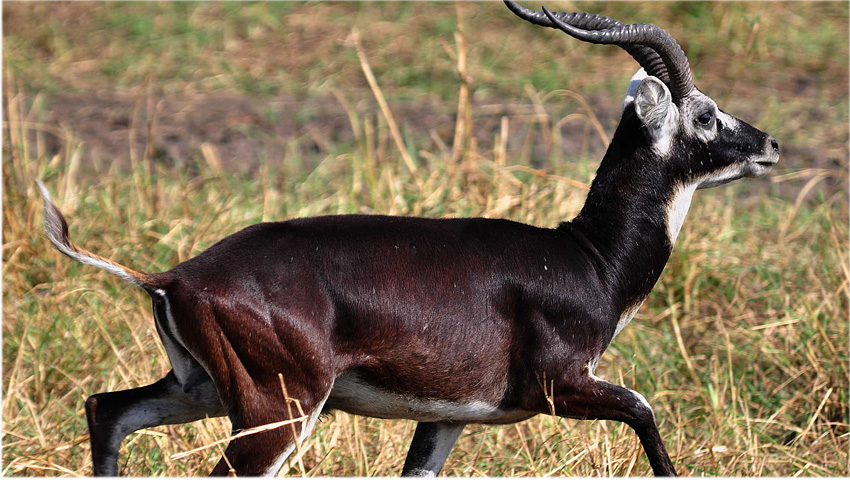 The Gambella National park is situated 800km in western Ethiopian near the town of Gambella. The park is created for protection of larger animals particularly white -eared Kob, Nile lechewe and white headed stork with extensive swamp habitat. It is the largest national park in Ethiopia and comprises of a place of adventure and challenge. Traveling across the endless undulating plains of high Sudanese grass, visitors can enjoy a sense of achievement in just finding their way. This is Ethiopia’s true tropical zone and here is found all the elements of the African safari, enhanced by a distinctly Ethiopian flavor.
The Gambella National park is situated 800km in western Ethiopian near the town of Gambella. The park is created for protection of larger animals particularly white -eared Kob, Nile lechewe and white headed stork with extensive swamp habitat. It is the largest national park in Ethiopia and comprises of a place of adventure and challenge. Traveling across the endless undulating plains of high Sudanese grass, visitors can enjoy a sense of achievement in just finding their way. This is Ethiopia’s true tropical zone and here is found all the elements of the African safari, enhanced by a distinctly Ethiopian flavor.
The park hosts several wildlife not found elsewhere in Ethiopia including the white-eared kob along with other riverbank residents that are the Nile lechwe, buffalo, giraffe, tiang, waterbuck, roan antelope, zebra, bushbuck, Abyssinian reedbuck, warthog, hartebeest, lion, elephant and hippopotamus. The banks of the Baro Rivers are rich in bird-life and thus give visitors an extra advantage of bird watching.
Mago Park
 Mago National Park is established in 1975. It is located on the eastern bank of the Omo River 30 km of Jinka town and 800km south of Addis Ababa. It is 2162 sq km in area characterized by Savannah type vegetation within dense acacia scrubs, rolling grassland and deserts, where birds dart in and out and the game roams freely. Its altitude ranges between 450 – 2,528meters above sea level adjacent to Omo Park.
Mago National Park is established in 1975. It is located on the eastern bank of the Omo River 30 km of Jinka town and 800km south of Addis Ababa. It is 2162 sq km in area characterized by Savannah type vegetation within dense acacia scrubs, rolling grassland and deserts, where birds dart in and out and the game roams freely. Its altitude ranges between 450 – 2,528meters above sea level adjacent to Omo Park.
It is the best place to visit bigger savanna mammals like Buffalo, Elephant, Lesser kudu, Lelwel hartebeest, Tiang, Oribi, Oryx, Giraffe, Grants gazelle, Gerenuk, Hippotamus, Crocodiles, De brazza’s monkey, Patas monkey, Black- backed Jackal, Warthog, African hunting dog, Guenther’s dikdik, Lion, Leopard, Carcal, Cheetahs, Striped hyena, Bat eared fox and Serval cat.
Nechsar Park
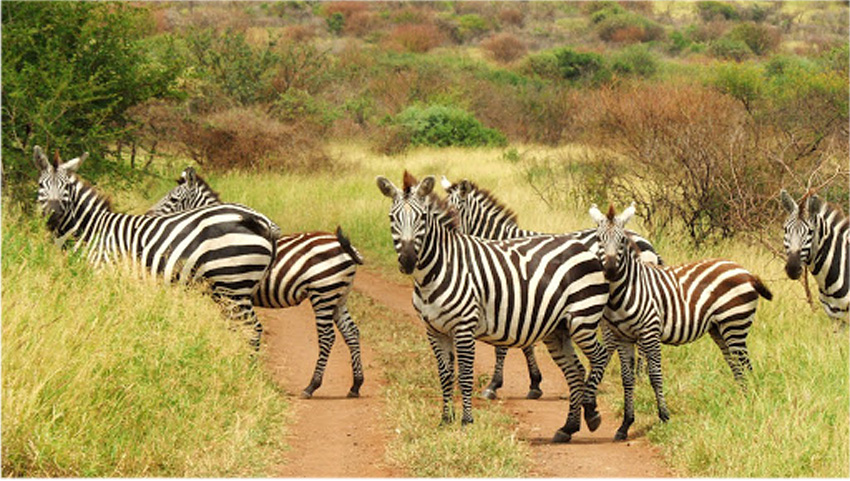 This park is found south of Addis Ababa near Arbaminch town over an area of 514 sq km; of which 78 sq km is covered by water. It is gifted land between the two rift valley lakes Abaya and Chamo, which are separated by uphill land that is known as “the bridge of God”. The park is undoubtedly the most spectacular scenery in the whole rift valley region of Ethiopia.
This park is found south of Addis Ababa near Arbaminch town over an area of 514 sq km; of which 78 sq km is covered by water. It is gifted land between the two rift valley lakes Abaya and Chamo, which are separated by uphill land that is known as “the bridge of God”. The park is undoubtedly the most spectacular scenery in the whole rift valley region of Ethiopia.
The vegetation is of savanna characteristics such as grassland, ground water forest, wetlands and bush land. The park is within an altitude of 1,108-1,650meter above sea level. It has features of rift valley escarpments, forests and hot spring.
Prolific wildlife of the Nechisar plains allows roaming it and discover the treasures of the park like Burchell’s Zebra, Swayne’s hartebeest, great kudu, guenther’s dik dik, red bushbuck, bush pig, Anubis baboons and vervet monkeys, warthog, African hunting dog, hippopotamus, crocodile and others.
It is also the best place for Ornithologist’s for discovering over hundreds of different types of birds over hundreds including the Endemic Nechisar nightjar, red-billed and grey hornbill, Abyssinian grand hornbill, fish-eagle, kingfishers and various bustard species and more… The two lakes are of course habitats for the aquatic lives like crocodiles and hippos. Lake Abaya, the largest of the Ethiopian rift valley lakes, is known for its crocodile farm; and the adjacent Chamo Lake is famous for its crocodile market.
Omo Park
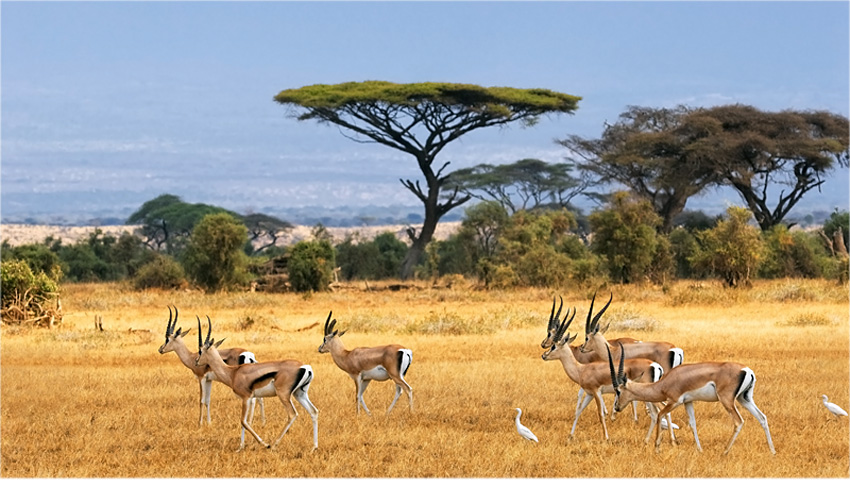 The Omo Park lies 870 km south west of Addis Ababa with an area of 4,068 square kilometers. Its altitude ranges between 400- 1183m above sea level. It is a vast expanse of true wilderness, blessed by Omo River, which flows southwards into Lake Turkana and is one of the richest and Least-visited wildlife sanctuaries in eastern Africa.
The Omo Park lies 870 km south west of Addis Ababa with an area of 4,068 square kilometers. Its altitude ranges between 400- 1183m above sea level. It is a vast expanse of true wilderness, blessed by Omo River, which flows southwards into Lake Turkana and is one of the richest and Least-visited wildlife sanctuaries in eastern Africa.
The Omo River is the life blood of the park and another wilderness for those who love white-water rafting. As the river passes varied scenery, it gives chance to see along the riverbanks many colorful birds and animals like Goliath herons, blue-breasted kingfishers, white-cheeked turacos, emerald-spotted wood doves and red-fronted bee-eaters. So also a rewarding sight is to monitor lizards may be glimpsed scuttling into the undergrowth. Beyond the forest, hippos graze on the savannah slopes against the mountain walls, and waterbuck, bushbuck and Abyssinian ground hornbills are sometimes to be seen as well.
Spectacular number of Eland, Oryx, Burch ell’s zebra, Lelwel hartebeest, buffalo, giraffe, elephant, waterbuck, kudus, lion, leopard and cheetah roam within the park’s boundaries. Abundant wildlife, spirited rapids, innumerable side creeks and waterfalls, sheer inner canyons and hot springs all combine to make the Omo one of the world’s classic river adventures.
Simien Mountains Park
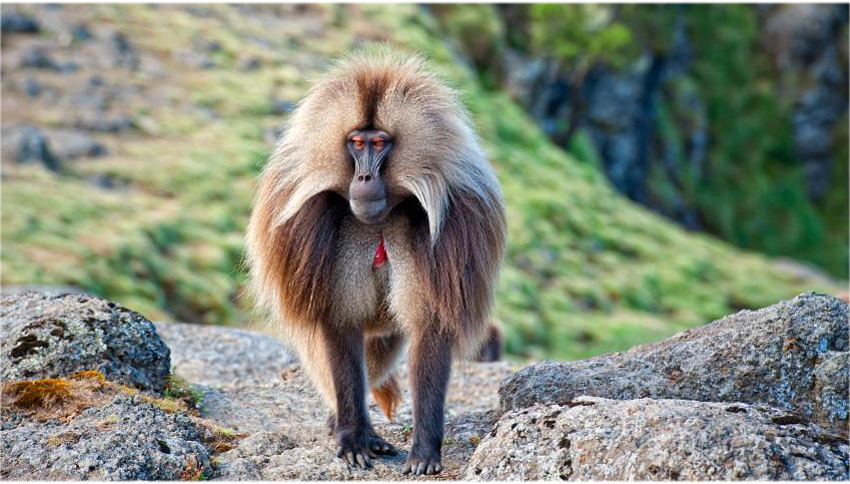 UNESCO has registered the simiens mountains national park as a world natural heritage site in 1978 because of its scenic value and centre for endemic mammals of Ethiopia. It is found in the north western part Simien Mountain massifs. It is the most rugged mountains part of Africa. The park was created primarily to protect the Walia Ibex and other endemic species.
UNESCO has registered the simiens mountains national park as a world natural heritage site in 1978 because of its scenic value and centre for endemic mammals of Ethiopia. It is found in the north western part Simien Mountain massifs. It is the most rugged mountains part of Africa. The park was created primarily to protect the Walia Ibex and other endemic species.
It covers 179 square km within the breath- taking views and natural habitat of the Walia (Abyssinian) ibex, Simien red fox and Gelada baboon – all endemic mammals to Ethiopia – as well as the Hamadryads baboon, klipspringer and bushbuck. Birds such as the lammergeyer, augur buzzard, Verreaux’s eagle, kestrel, falcon and altogether more than 50 species soar above this mountain retreat.
The park lies within an average elevation of 3,300 meters. Ras Dashen, at 4,620 meters is the highest peak in Ethiopia. The vegetation types are mountain grasslands with fescue grasses as well as heathers, splendid Red Hot Pokers and Giant Lobelia.
Geological features of the park are spectacular mountain scenery and escarpments consisting of dark Trapp basalts and bright, soft tuff, landscape, cool climate and endemic wildlife. The attractions can be largely discovered through trekking. That is why trekking is one of itineraries of Rainbow to visit the park.
Yangudi Rassa Park
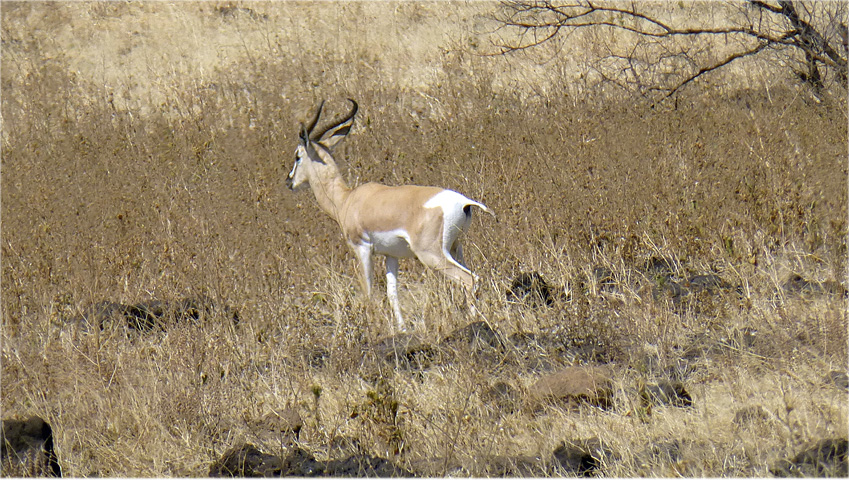 Yangudi-Rassa National Park is situated 365 km from Addis Ababa in the centre of the Afar Region between the towns of Gewani and Mille. The park is characterized by desert eco system with reverie forests along the Awash River, marshes and small lakes, dry riverbeds, rocky hills, sandy semi-desert and wooded grasslands.
Yangudi-Rassa National Park is situated 365 km from Addis Ababa in the centre of the Afar Region between the towns of Gewani and Mille. The park is characterized by desert eco system with reverie forests along the Awash River, marshes and small lakes, dry riverbeds, rocky hills, sandy semi-desert and wooded grasslands.
The park ranges between 400-1460 meter above sea level; and specifically designated to protect wild Ass. More than 230 bird species have been recorded in this area with many migratory species too. Besides the wildlife, the park is also important for safeguarding a 50-km strip of rich archaeological remains along the eroded hills near the Awash River.
The major wildlife species of the park are Wild Ass, Soemmerring’s Gazelle, Hamadryads’ Baboon, Gerenuk, Cheetah, Leopard, Lion, Greater Kudu, Lesser Kudu, Salt’s dikdik and Warthogs. Active volcanoes, archeological sites, extensive arid desert ecosystem and Awash River are additional attractions.
SOF Omer Cave
 SOF Omer Cave is situated 120 km east of Goba town and it is one of the most spectacular and extensive underground caves in the world created by Web River. The inside of the cave is made up a marvel of architecture – soaring pillars of stone twenty meter high, flying buttresses, fluted arch-ways, and tall airy vaults that form an extraordinary natural phenomenon of breathtaking beauty.
SOF Omer Cave is situated 120 km east of Goba town and it is one of the most spectacular and extensive underground caves in the world created by Web River. The inside of the cave is made up a marvel of architecture – soaring pillars of stone twenty meter high, flying buttresses, fluted arch-ways, and tall airy vaults that form an extraordinary natural phenomenon of breathtaking beauty.
The cave lies at 1,300m above sea level within fantastic limestone rocks. This is where the Web River starts to vanish into this giant underground world forming an arched portals, high eroded ceilings, and deep vaulted muffled chambers.
Inside the cave some animals like bats, fish, crocodiles can be observed.
The surrounding area is abounds more wildlife like dik dik, Kudu, Serval cat, rock hyrax, giant tortoises, snakes and lizards as well as more than fifty species of birds.
This cave, now an important Islamic shrine is named after the saintly Sheikh Sof Omer, who took refuge here many centuries ago, have a religious history that predates the arrival of the Muslims in Bale.
Danakil Depression
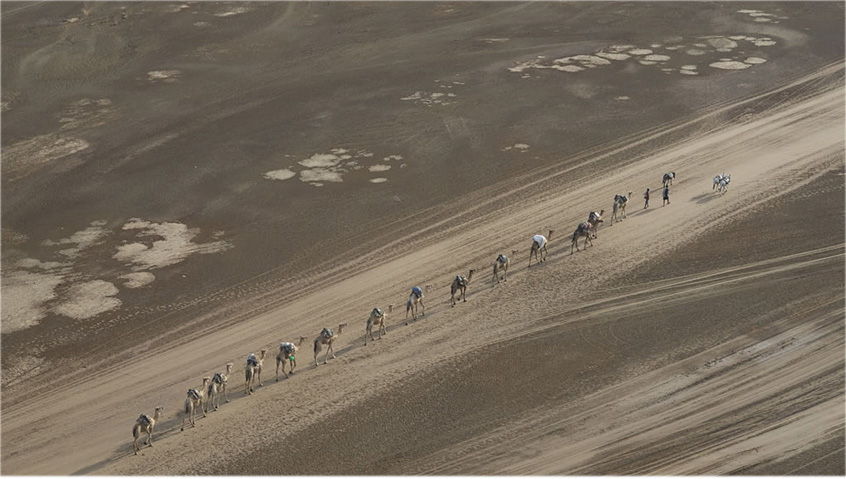 Afar Depression is a plate tectonic triple junction where the spreading ridges that are forming the Red Sea and the Gulf of Aden emerge on land and meet the East African Rift. The Afar Depression is one of two places on Earth where a mid-ocean ridge can be studied on land, the other being Iceland. At present, the Afar is slowly being pulled apart at a rate of 1-2 cm per year. The floor of the Afar Depression is composed mostly of basaltic lava. The Afar Depression and the Triple Junction also mark the location of a mantle trail, a great uprising of mantle that melts to yield basalt and changes to liquid to have colorful structure.
Afar Depression is a plate tectonic triple junction where the spreading ridges that are forming the Red Sea and the Gulf of Aden emerge on land and meet the East African Rift. The Afar Depression is one of two places on Earth where a mid-ocean ridge can be studied on land, the other being Iceland. At present, the Afar is slowly being pulled apart at a rate of 1-2 cm per year. The floor of the Afar Depression is composed mostly of basaltic lava. The Afar Depression and the Triple Junction also mark the location of a mantle trail, a great uprising of mantle that melts to yield basalt and changes to liquid to have colorful structure.
This place which used to be part of the Red Sea has kilometers of salt deposits. In some places the salt deposits are about 3miles (5 KMS) thick. Below a salt lake is a substantial source of volcanic heat which causes hot water to rise through layers of salt and a hydrate deposits. Minerals get dissolved and are deposited, near the springs, and form shapes very much reminiscent of (but smaller than) hornitos on basaltic lava flows. Sulphur and other minerals possibly Thermopylae bacteria form spectacular colors.
Erta_Ale volcano
 A special place found in the Afar depression at elevation 613m is called “Erta Ale”. It is a shield volcano, which has a base diameter of 30km and is only 500m high. At its vast summit,(1600x700m) there are two pit craters. The larger one (300-400m diameter) in the northern part contained a lava lake until between 1968 and 1973, but is now inactive. A central, but smaller pit (140m diameter, 60 to 90m deep) now has an active lava lake.
A special place found in the Afar depression at elevation 613m is called “Erta Ale”. It is a shield volcano, which has a base diameter of 30km and is only 500m high. At its vast summit,(1600x700m) there are two pit craters. The larger one (300-400m diameter) in the northern part contained a lava lake until between 1968 and 1973, but is now inactive. A central, but smaller pit (140m diameter, 60 to 90m deep) now has an active lava lake.
Erta Ale is one of the spectacular and unique places in Afar- Ethiopia. It is the most active isolated shield Volcano in Ethiopia famed for its long-standing lava lake activity. On its Summit, the volcano hosts cryptic shaped caldera (mouth of volcano) of about 1600 x 700 meters width. Fresh looking basaltic lava fill much of the caldera and overflows its rim on the southern side.
The northern half of this caldera contains two steep sided pit craters of different size; one on its northern tip and the other a little down south. Lava rising up to 20 meters high occurred in different areas at the Crater Lake, but mainly in the west, south and center. There are some records which tell that some very adventurous, scientists have dared to walk on top of the temporarily crusted lava with the intention to document the activity of the Lava Lake.
The surface near the crater rim is broken by cracks of different width that run in concentric circles around the crater pit. Many parts of the edge can be seen hanging over the empty space. The crater walls are very unstable and rock falls (avalanches) are not uncommon. If one happens to be there at the time of such rock falls one it is very likely to see a dramatic cloud of Orange brown dust covering the pit. Recently, after the dramatic eruption of 2005, both the crater pit and the lava lake have been found to have expanded remarkably.
The composition of the rock at Erta Ale ranges from basalt to hyalite. According to earth scientists, Erta Ale has erupted seven times in the past 125 years and has been erupting continuously since 1967.
Archaeological Sites
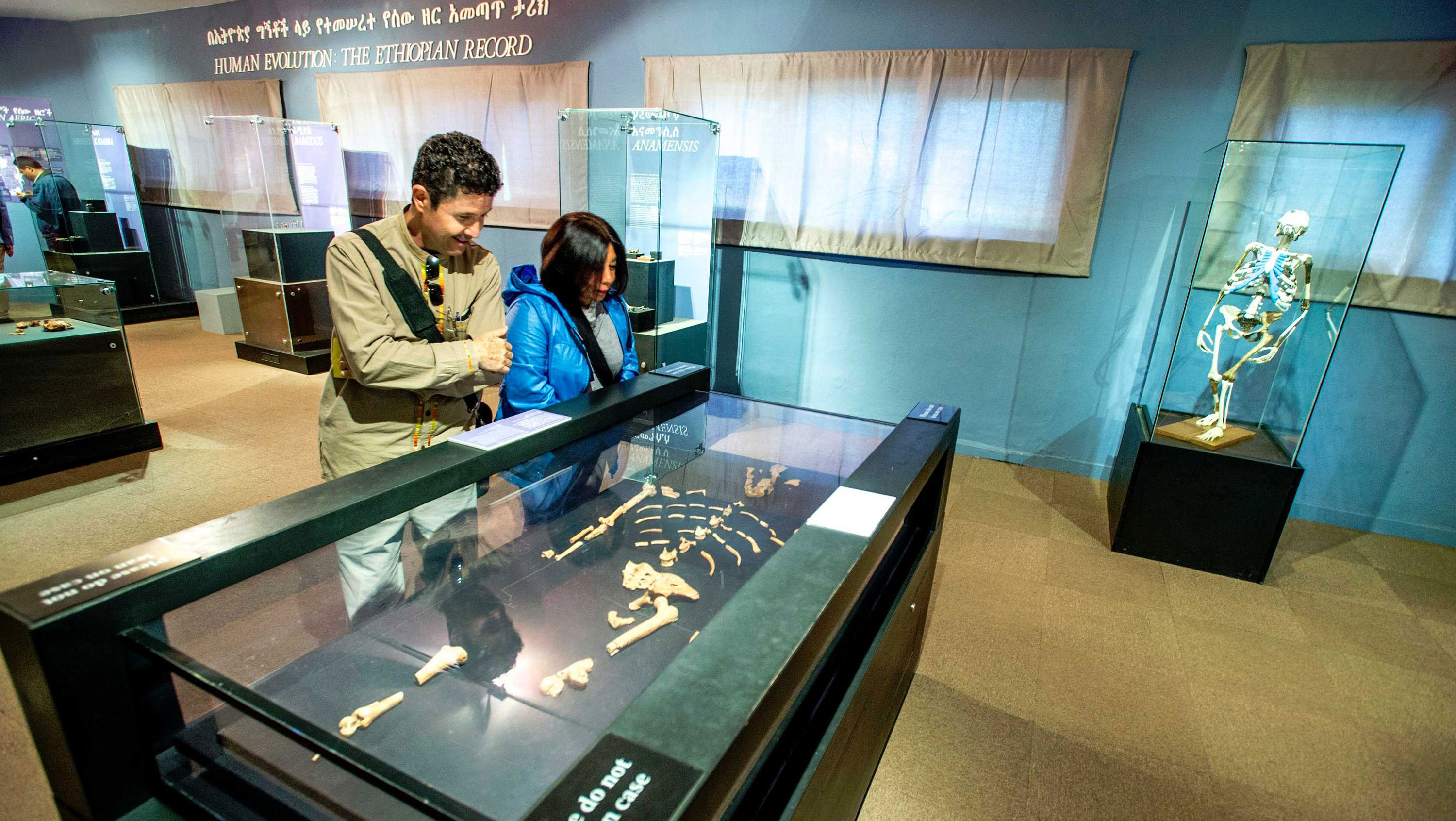 Ethiopia is the earliest known home of humankind. The lower Awash, Upper Awash and Lower Omo Valley are the best sites where to study and to see these archeological facts. Especially the lower Awash site (Hadar) one of the most important site is where more than 2/3 of Human study is conducted and registered as a World Heritage. It is the live place where a skeleton of an older human ancestor Australopithecus Afarensis was discovered in 1974. Anthropologists have established that the finding of skeleton covering 40% of the human body had belonged to a twenty-years-old female that lived 3.5 million years ago.
Ethiopia is the earliest known home of humankind. The lower Awash, Upper Awash and Lower Omo Valley are the best sites where to study and to see these archeological facts. Especially the lower Awash site (Hadar) one of the most important site is where more than 2/3 of Human study is conducted and registered as a World Heritage. It is the live place where a skeleton of an older human ancestor Australopithecus Afarensis was discovered in 1974. Anthropologists have established that the finding of skeleton covering 40% of the human body had belonged to a twenty-years-old female that lived 3.5 million years ago.
The Skeleton is popularly known as Lucy or Dinkinesh. The discovery has completed the missing link between apes and men – paving the way for the search to human origins. In addition, the earliest known hominid; 4.4 million years old Ardipithecus Ramidus was discovered in the Middle Awash in 1992. The recent discoveries include Australopithecus Garhi; 2.5 million-years-old hominid. Garhi means ‘surprise’ in the Afar language – a language spoken in the internationally acclaimed archeological site.
